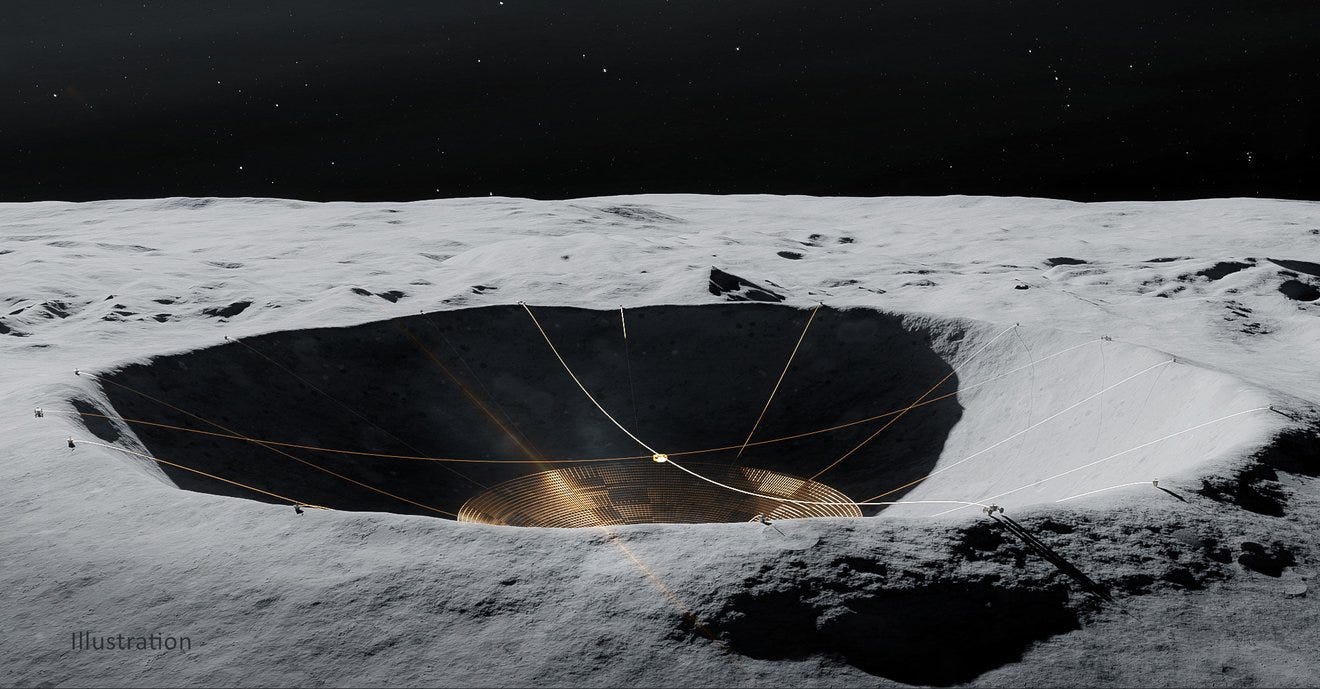JPL's next-generation rover's central role in new mission concept
DuAxel rover designed to build telescope on Moon, explore hard-to-reach parts of Mars
The Jet Propulsion Laboratory’s (JPL) DuAxel rover design has received an early boost of confidence, after NASA awarded an Innovative Concept Design grant to study a mission that would make extensive use of the rover’s unique abilities.
DuAxel’s revolutionary design allows the vehicle to traverse steep slopes and even cliff faces - the sorts of areas that are well beyond the reach of the current generation of Mars rovers.
When attempting a steep or vertical traverse, the rover splits in two. First, the chassis is lowered to the ground at the cliff edge, and is anchored in place, along with the rear axle. Once the rover is secure, the front axle detaches from the vehicle, and lowers itself down, attached to the rest of the vehicle by a tether containing power and communication cables. Contained within the axle itself is an instrument suite that allows it to take measurements as it goes. The process is reversed to reattach the axle to the rover.
YouTube video of the DuAxel rover in testing
‘This is why I find the rover to be quite delightful,’ said Laura Kerber, a planetary geologist at JPL. ‘Instead of always trying to safeguard itself against dangers such as falling or flipping over, it is designed to withstand them.’
Unlike the Curiosity and Perseverance rovers, which were designed with Mars solely in mind, the DuAxel rover is optimized for use on a wide range of planetary bodies. Now NASA has funded a $500,000 Innovative Concept Design, an advanced study that would determine how a long-held dream of science fiction - a radio telescope on the Moon - might become a reality.
The Moon’s far side has long been considered an ideal place for radio astronomy. As the Moon is tidally locked with Earth, the same side of the Moon always faces the Earth, meaning that the far side is shielded from the noise of Earth’s radio communications. Craters, with their bowl-like shape, offer a natural location for radio telescope dishes.
The grant-winning concept, the Lunar Crater Radio Telescope (LCRT) project, envisages the construction of an unprecedentedly large one-kilometre radio telescope in the centre of a large crater on the lunar farside. The dish would be fabricated out of wire mesh, laid and then suspended over the crater by a fleet of DuAxel rovers. Finally, a receiver is strung up overhead. This concept has been used successfully with a variety of large radio telescopes on Earth, including the now-defunct Arecibo radio telescope in Puerto Rico.

Once in place, the telescope could be used to provide observations of phenomena that cannot be investigated by telescopes on Earth due to the noisy radio environment or atmospheric interference. One such area of study is long-wavelength radio waves, the detection of which is compromised on Earth by the ionosphere.
Possible applications for the DuAxel rover on Mars include in situ investigation of recurring slope lineae (RSL), mysterious features that commonly appear on equatorial slopes; the caldera of dormant volcanoes; and Martian cave systems.



